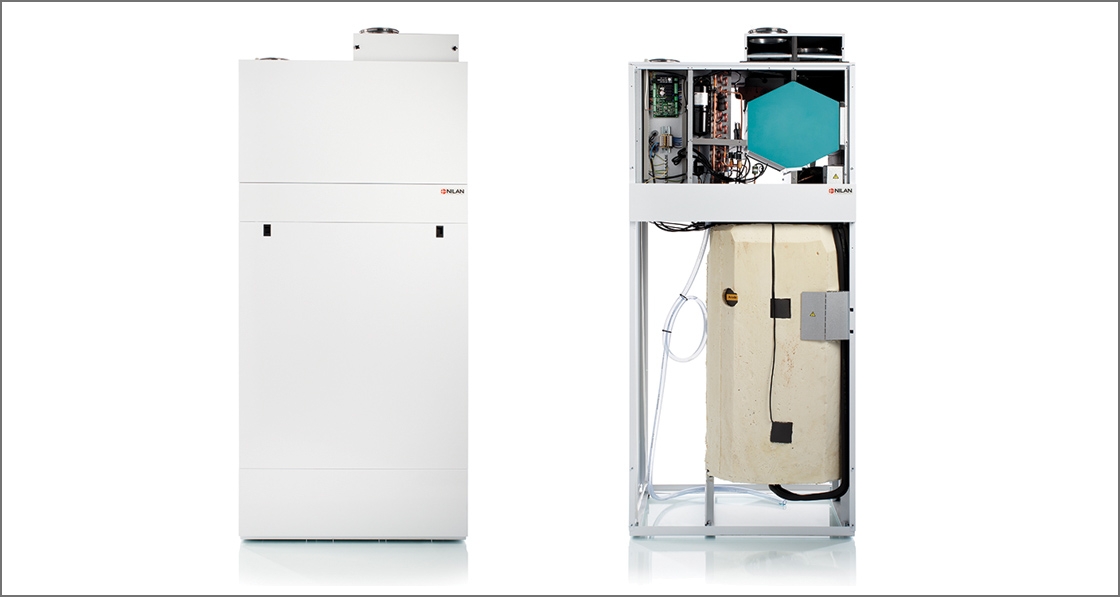
- Product News
- Posted
Combined air & underfloor heating ideal for Irish passive house — Nilan
Heating expert Maurice Falvey of Nilan Ireland has advised that a combination of air-based and underfloor heating may offer the best overall solution for the heating of passive houses in Ireland.
He explained: “There is a view that the overall heat load is evenly divided across the floor area of a passive building at 10w/m2, but this is not always the case – especially in rooms with large glazed areas that contribute to higher heat loads during the winter period, as opposed to rooms with less glazing, positioned towards the centre of the building.
“The other considerations are bathrooms, ensuites and WCs, which require higher room temperatures, but have extract vents only. These areas do depend on secondary heating sourced from the likes of electrical towel rails or underfloor heating.”
Falvey said that while stoves contribute to space heating in a living room, with a proportion of this heated air being circulated throughout the building via mechanical ventilation heat recovery, this depends on the location of the stove. “It isn’t always possible to deliver this heated air to all areas of the building where it’s needed and at a desirable temperature,” he said.
Irish houses tend to be much larger than on mainland Europe, Falvey said, adding that his experience was that the combination of space heating through the ventilation system and zoned underfloor heating provides a balanced whole house solution. “Irish houses often have additional design features that extend beyond the main envelope of building, which are prone to higher heat losses during the winter period,” he added.
“I am not advocating that all passive houses need to be designed as a rectangular boxes, but, there is a need to accept that air heating alone is not the complete solution to space heating demands – an acceptance that a combination of heating systems may be required.”
Falvey added that Nilan Compact P’s all-in-one heat pump and ventilation unit can provide this solution without the need for a “complicated mishmash” of systems.







